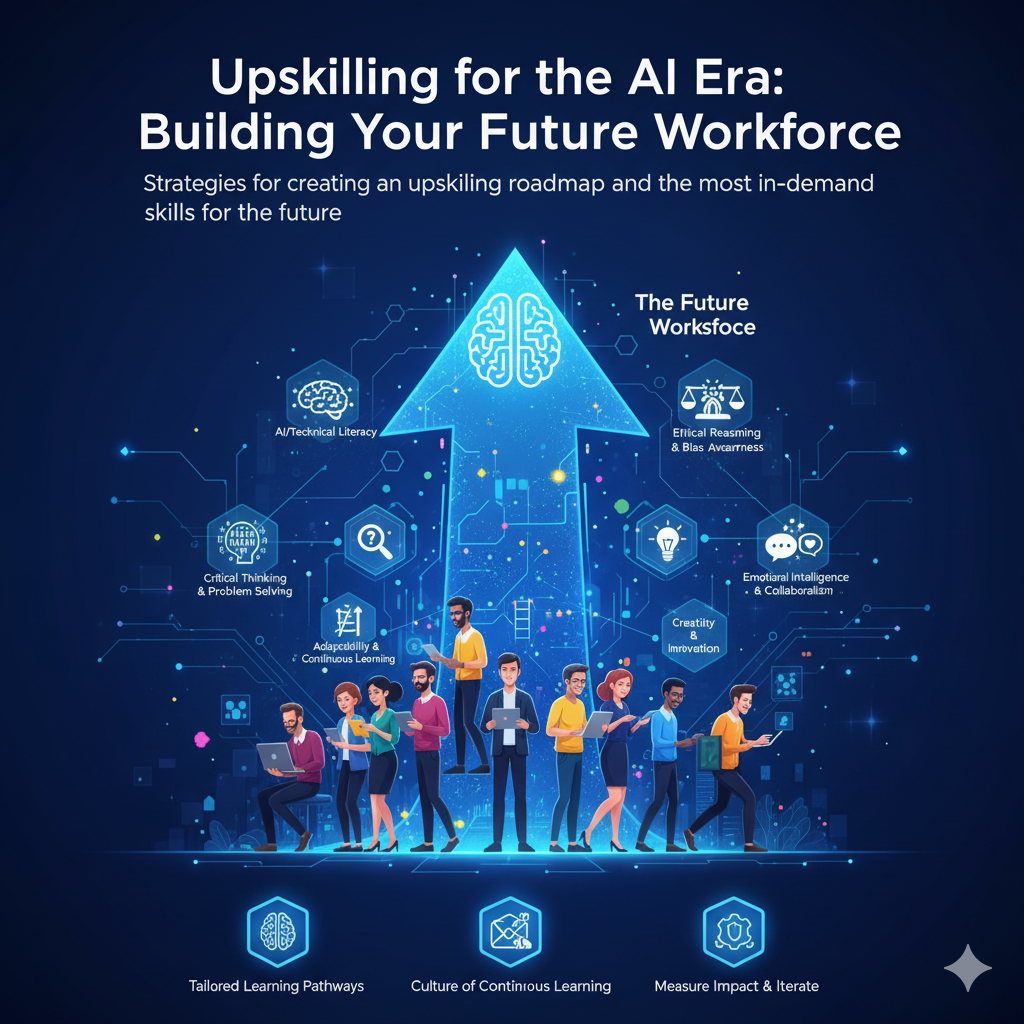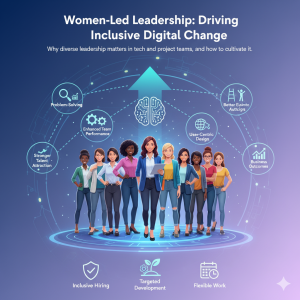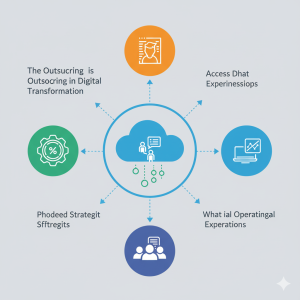The rise of Artificial Intelligence (AI) isn’t just changing what we do; it’s fundamentally reshaping how we work and the skills required to thrive. While concerns about job displacement often dominate headlines, the more constructive reality is that AI is creating new roles and augmenting existing ones, necessitating a proactive approach to workforce development. For organizations and individuals alike, upskilling for the AI era is no longer optional – it’s an imperative for future relevance and success.
Ignoring this shift risks talent gaps, reduced productivity, and a lagging competitive edge. The key is to transform your workforce from AI-aware to AI-empowered.
Why Upskilling is Critical in the AI Era
- Bridging the Skills Gap: The rapid evolution of AI technology creates a chasm between current workforce capabilities and future demands. Upskilling helps bridge this gap.
- Enhancing Human-AI Collaboration: The future isn’t humans versus AI, but humans with AI. Upskilling enables employees to effectively leverage AI tools, becoming “AI-augmented” professionals.
- Driving Innovation: A digitally literate and AI-savvy workforce is better equipped to identify new opportunities, develop AI-driven solutions, and innovate within the organization.
- Retaining Top Talent: Investing in employee development shows a commitment to their growth, increasing morale, engagement, and retention in a competitive talent market.
- Maintaining Competitiveness: Organizations with an AI-ready workforce can adapt faster, operate more efficiently, and deliver superior products and services.
Strategies for Creating an Upskilling Roadmap
Building an effective upskilling roadmap requires a strategic, holistic approach:
- Assess Current Capabilities & Future Needs:
- Skills Inventory: Catalog the current skills within your workforce.
- Future Role Mapping: Identify how AI will impact existing roles and what new roles will emerge. Define the skills required for these future states.
- Gap Analysis: Pinpoint the specific discrepancies between current and future skill sets.
- Define Clear Learning Objectives:
- For each role or department, articulate what employees need to learn, why it’s important, and how it aligns with business goals.
- Prioritize skills based on business impact and urgency.
- Tailor Learning Pathways:
- Recognize that “one size fits all” doesn’t work. Offer diverse learning formats: online courses (MOOCs), certifications, bootcamps, internal workshops, hackathons, mentorship programs, and on-the-job training.
- Consider creating personalized learning paths based on individual roles, existing skills, and career aspirations.
- Leverage Internal and External Expertise:
- Internal Champions: Identify and empower employees who already possess nascent AI skills to become trainers or mentors.
- External Partners: Collaborate with educational institutions, specialized training providers, or AI consultancies to deliver cutting-edge content.
- Foster a Culture of Continuous Learning:
- Allocate Time & Resources: Make learning a part of the job, not an add-on. Provide dedicated time and budget for upskilling.
- Recognize & Reward: Acknowledge and incentivize employees for acquiring new skills and applying them.
- Lead by Example: Leaders must visibly participate in learning and champion the importance of upskilling.
- Measure Impact & Iterate:
- Track completion rates, skill acquisition, and most importantly, the application of new skills in projects.
- Gather feedback, analyze what’s working and what isn’t, and continuously refine your upskilling programs.
Most In-Demand Skills for the AI Era
While technical proficiency is crucial, the AI era also amplifies the importance of distinctly human skills.
1. AI/Technical Literacy:
* Understanding AI Fundamentals: What is AI, ML, NLP? How do they work? What are their capabilities and limitations? (Not everyone needs to be a data scientist, but everyone needs a foundational understanding).
* Data Literacy: Ability to understand, interpret, and work with data (collection, cleaning, analysis, visualization).
* Prompt Engineering: The skill of crafting effective prompts to get desired outputs from generative AI models.
* Cloud Computing Knowledge: Understanding how AI tools are deployed and managed in cloud environments.
2. Critical Thinking & Problem Solving:
* AI can provide answers, but humans need to ask the right questions, critically evaluate AI outputs, and apply contextual understanding.
3. Creativity & Innovation:
* AI can generate ideas, but human creativity is essential for truly novel concepts, artistic expression, and imaginative solutions.
4. Adaptability & Continuous Learning:
* The pace of technological change demands a mindset of lifelong learning and the ability to quickly adapt to new tools and methodologies.
5. Emotional Intelligence & Collaboration:
* As routine tasks are automated, roles requiring empathy, negotiation, teamwork, and strong interpersonal skills become even more valuable. AI cannot replicate genuine human connection.
6. Ethical Reasoning & Bias Awareness:
* Understanding the ethical implications of AI, identifying potential biases in algorithms, and ensuring responsible AI development and deployment.
Conclusion
The AI era is not about replacing humans; it’s about augmenting human potential. By strategically investing in upskilling, organizations can transform their workforce into a powerful engine for innovation, resilience, and growth. This proactive approach ensures that employees are not just prepared for the future, but are actively building it.




